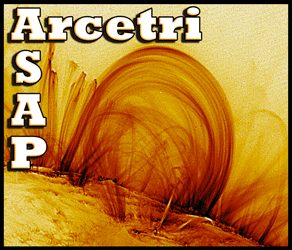Research topics

|
Our group has as its main research field the physics of solar, heliospheric and astrophysical plasmas. The investigation is mainly theoretical / numerical, here we present some of the issues we deal with, that could also represent possible topics for a student's thesis. A thesis work in our group is generally based on theoretical, and especially numerical, models. In addition to acquiring a solid background in the fundamental processes of plasma physics and MHD, the same ones that are also found in laboratory plasmas for the study of nuclear fusion, the student gains experience in programming and on numerical computational methods, useful even in fields other than physics. |
Plasmas and numerical simulations
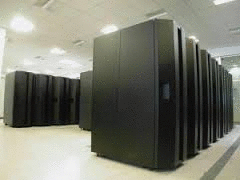
|
The equations governing the evolution of plasmas are extremely complex and strongly nonlinear, therefore the theoretical investigation is mainly carried out through numerical simulations. Within our research group we develope and use various numerical codes, both of fluid type (MHD regime in the case of magnetized plasmas), and of kinetic (or hybrid) type. Such codes are written for execution on supercomputers, with thousands of units working in parallel, to achieve a high computing power (in figure a cluster at CINECA). |
Solar plasmas: coronal heating and reconnection
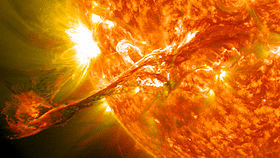 |
The solar atmosphere, in particular the corona, is certainly the astrophysical environment in which the importance of magnetic fields manifests itself in the most spectacular ways. Especially in the regime of maximum solar activity, the corona is strongly dynamic and dominated by magnetic arches, prominences in continuous eruption (see an image of the SDO probe), and flares on all spatial and temporal scales. The corona is a tenuous but very hot plasma, on the order of millions of degrees, thousands of times hotter than the underlying layers. |
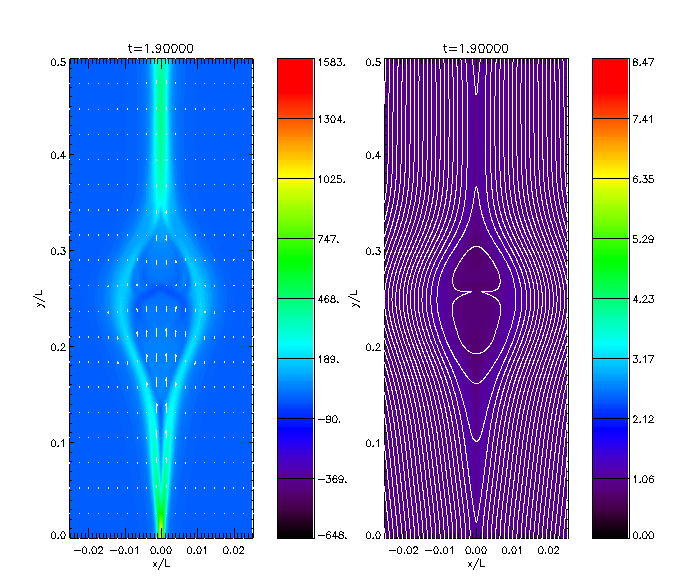
|
This anomalous behavior can probably be explained by the phenomenon of magnetic reconnection, which is a sudden change in topology in which magnetic lines break and a large amount of magnetic energy is released, then converted into thermal energy and the release of accelerated particles. Many aspects of this phenomenon can be explained through numerical simulations of resistive magnetohydrodynamics (MHD) (see figure). A definitive answer on the origin of coronal heating will probably be given by the Solar Orbiter and Parker Solar Probe, to which members of our group actively participate. |
Heliospheric plasmas: waves, turbulence and particles in the solar wind

|
The hot solar corona is a continuous source of the solar wind, a supersonic flow of plasma and charged particles that propagates in space to the Earth and the rest of the heliosphere reaching speeds of about 1000 km/s. The solar wind is a fantastic laboratory for plasma physics, as it is the only astrophysical environment in which probes can measure relevant physical parameters in situ. It has been found that this flux is permeated by MHD waves which propagate mainly outwards and which presumably contribute to its acceleration (see the graph with a model for the fluctuations in velocity and magnetic field). In addition, an extended spectrum of turbulence is observed, whose properties evolve with distance from the Sun, also contributing to the acceleration and heating of the solar wind plasma. |
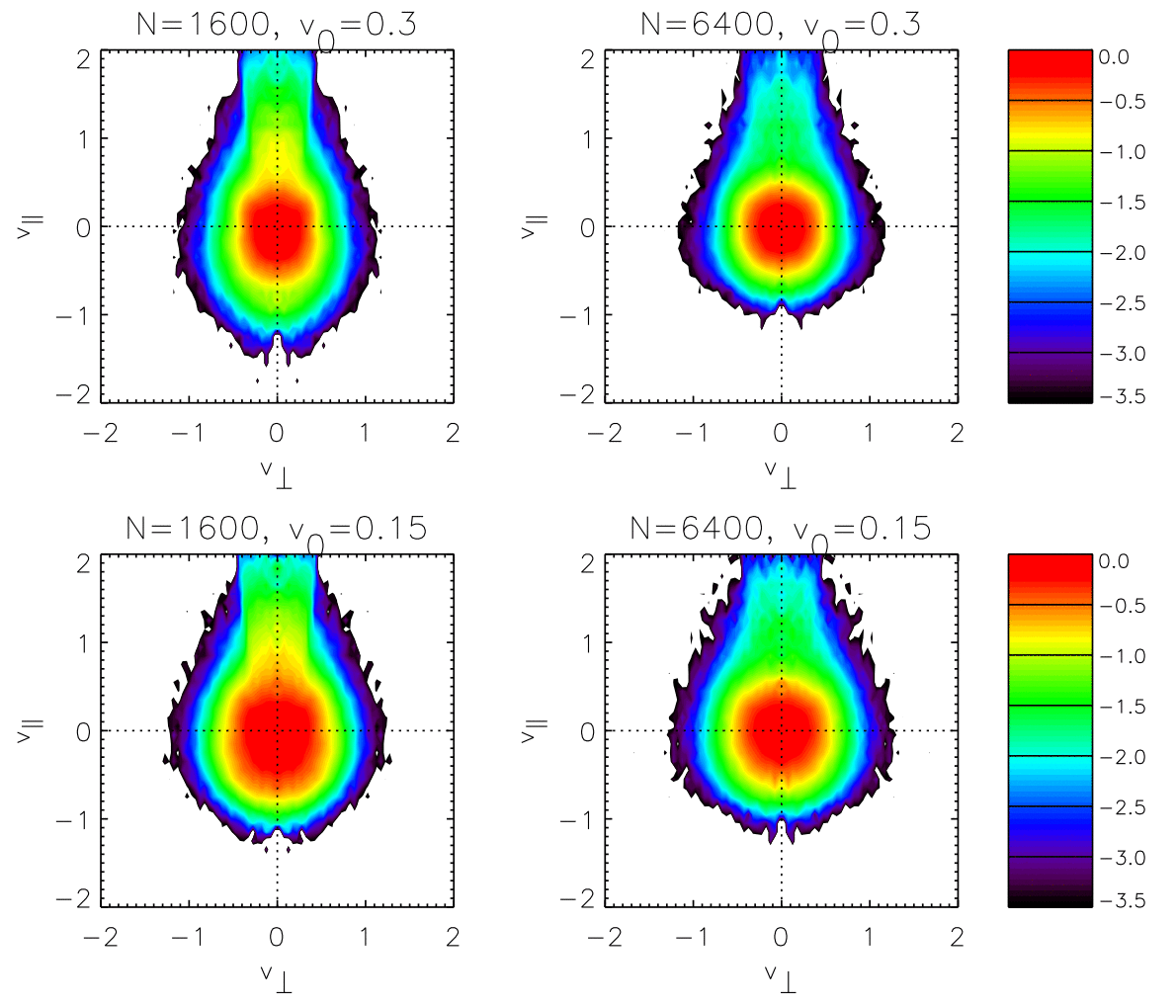
|
When the turbulent cascade reaches smaller scales, both in evolution times and in space, the fluctuations can be dissipated, probably due to kinetic effects. Due to its low density, the solar wind is in fact in a hybrid regime, so the fluid treatment is not always satisfactory. For example, it is observed that both ions (protons) and electrons exhibit deviations from the thermal equilibrium, such as supra-thermal tails elongated in the direction of the local magnetic field. It is possible to reproduce these observations only through kinetic simulations, in which it is possible to take into account the deviations with respect to the average fluid velocity of the individual particles (in the figure the simulated electronic distribution function). |
Relativistic Astrophysical plasmas: pulsar winds and supernova remnants
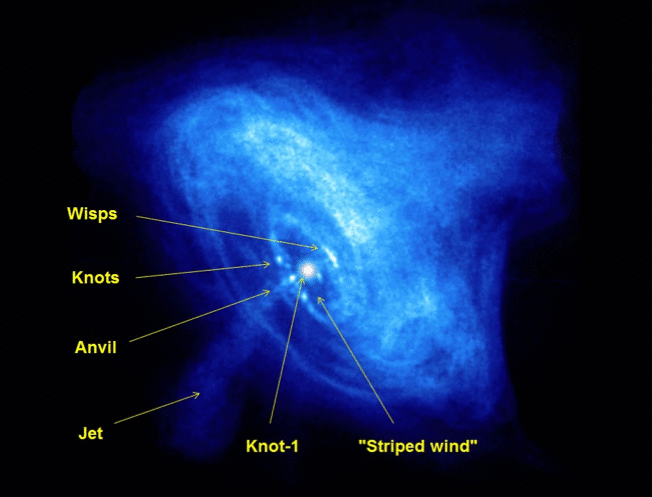
|
In astrophysics there are cases in which plasmas have extreme characteristics, such that they must be treated as relativistic fluids. Fast-spinning magnetized neutron stars emit a wind of electron-positron pairs with extremely high Lorentz factors. This ultrarelativistic flux impacts on the surrounding supernova remnant and a so-called Pulsar Wind Nebula is formed, which emits non-thermal synchrotron radiation over the entire spectrum. In the figure we report the map of brightness in the X-rays of the Crab nebula obtained by the Chandra satellite. |
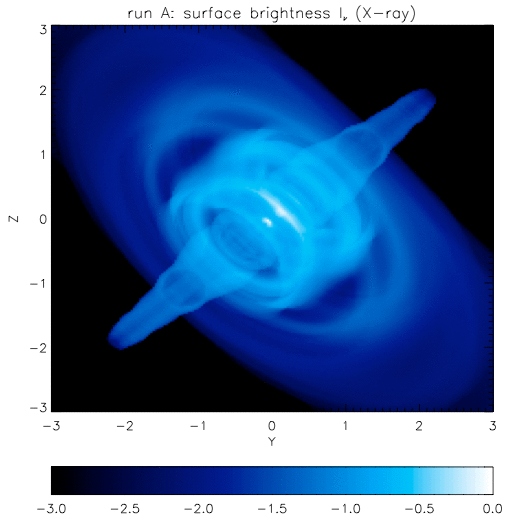
|
In collaboration with the High-Energy Astrophysics group, numerical simulations are carried out that allow us to reproduce the dynamics and emission of the Pulsar Wind Nebulae, in order to derive otherwise unknown physical parameters. For example, we understood that polar jets are formed by a magnetic collimation effect, if the pulsar wind is anisotropic and sufficiently magnetized. We show in the figure the simulated X emission for our model, which reproduces many of the observed details. |
Astrophysical plasmas in general relativity: neutron stars and black holes

|
Astrophysical plasmas in the extreme gravitational field of so-called compact objects (neutron stars and black holes) require a treatment based on the theory of general relativity. L. Del Zanna and collaborators have developed a shock capturing code for the evolution of classical and relativistic plasmas, in the MHD regime, given any space-time metric, even variable over time (ECHO). Numerical studies have been aimed for example at the simulation of accretion disks around black holes, in Kerr metrics. Periodic accretion events could be explained by a turbulent dynamo effect within the disc, that over time-scales of a few periods of revolution regenerates cyclically, amplifies and causes the magnetic field to migrate (in the figure a moment of such evolution), in analogy with the solar case. |
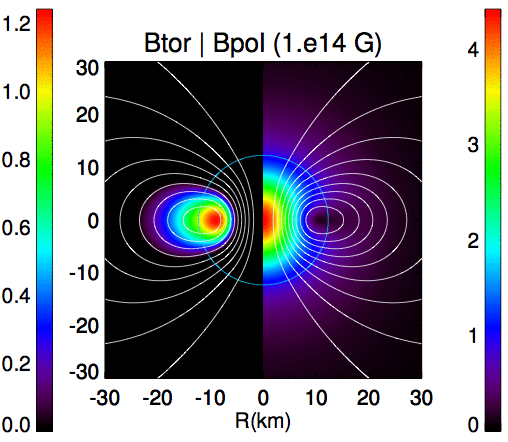
|
In collaboration with N. Bucciantini (INAF - Arcetri) we also deal with the modeling of the magnetic structure of neutron stars, of which we show a configuration as an example, for which a specific code (XNS) has been developed. It is based on the solution of the MHD equations and those of Einstein assuming axial and metric symmetry according to flat. L. Del Zanna is also local coordinator of a specific INFN initiative on neutron stars as possible sources of gravitational waves (TEONGRAV). |

